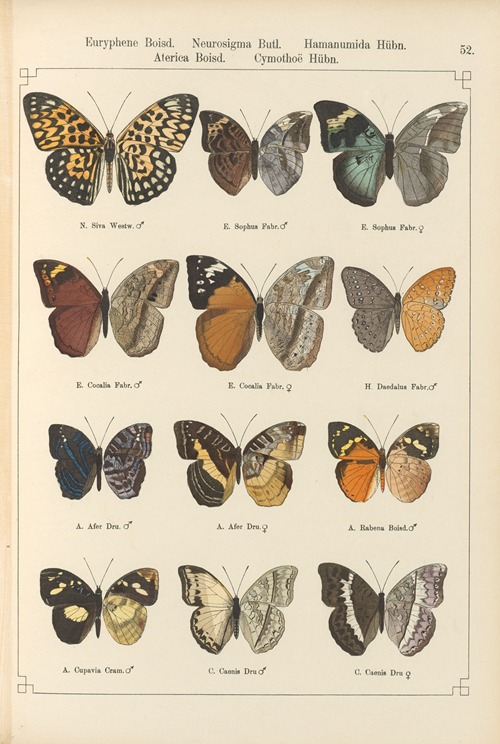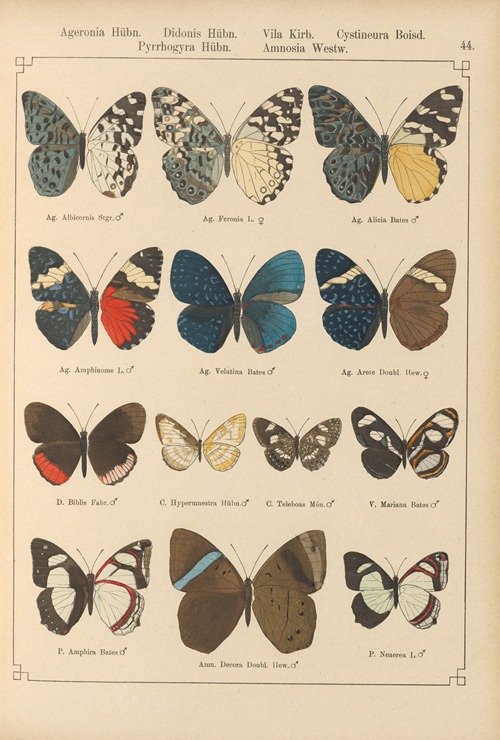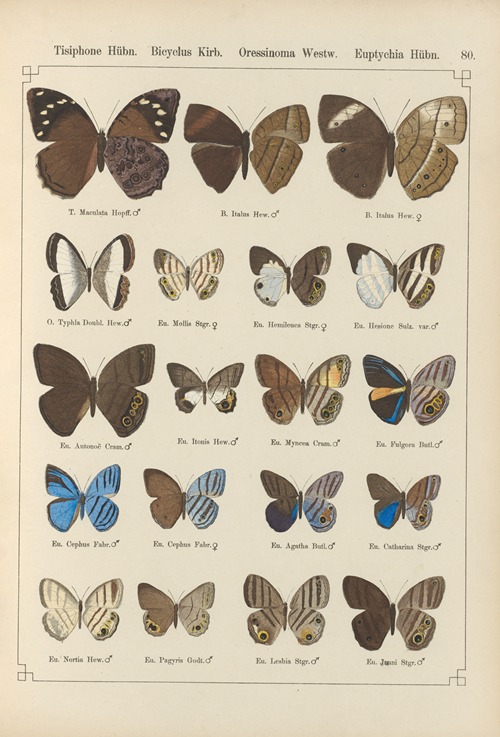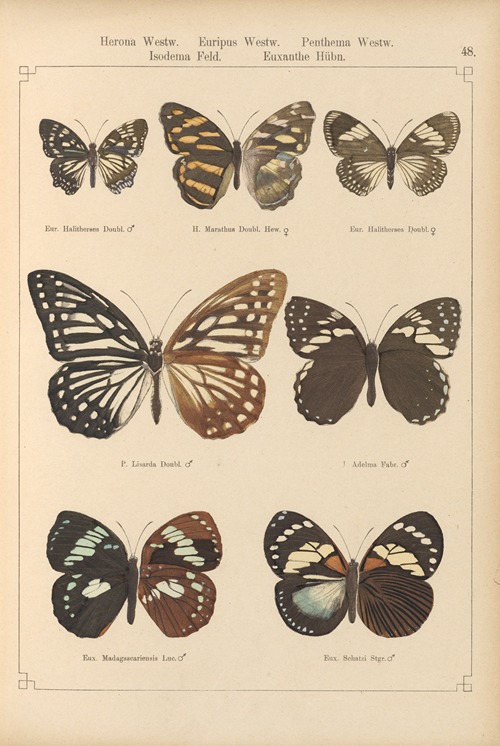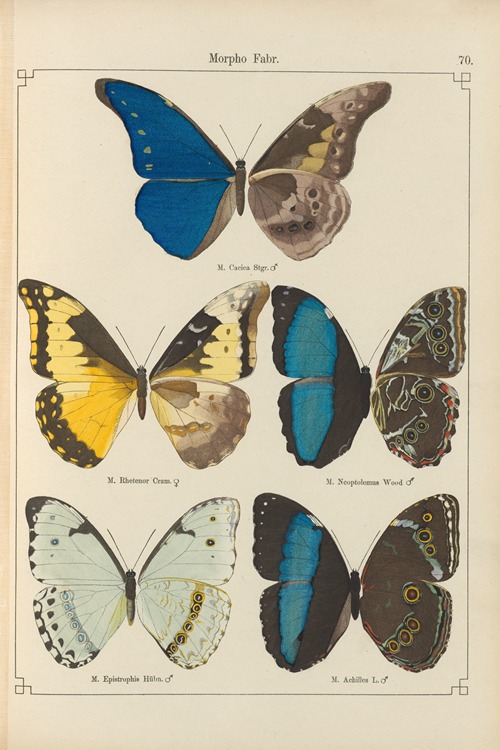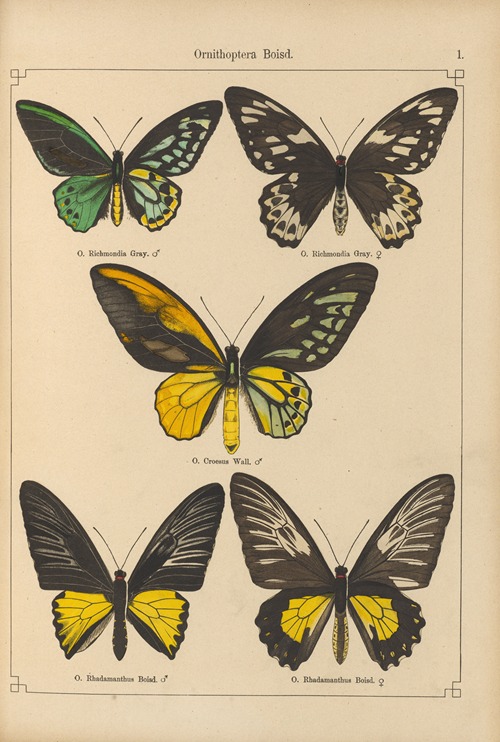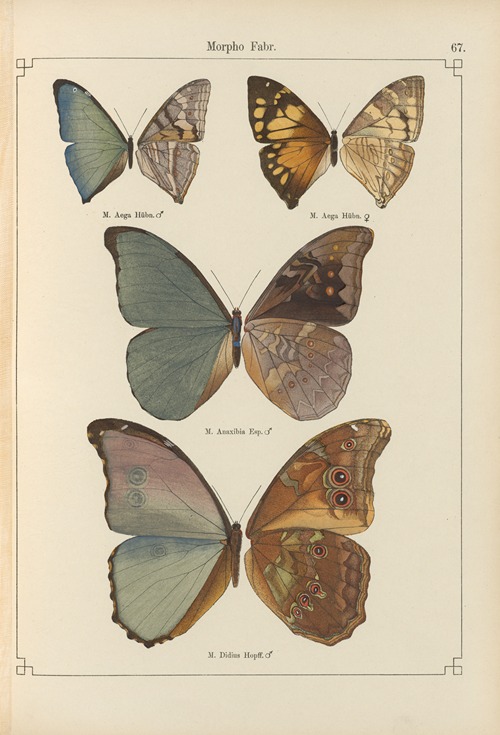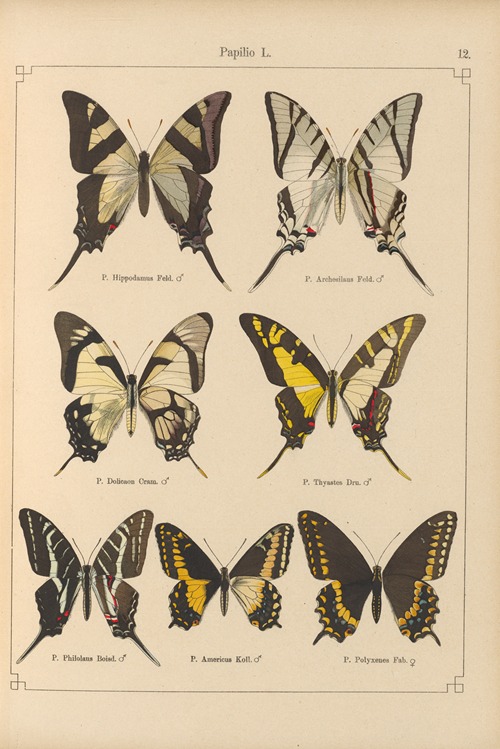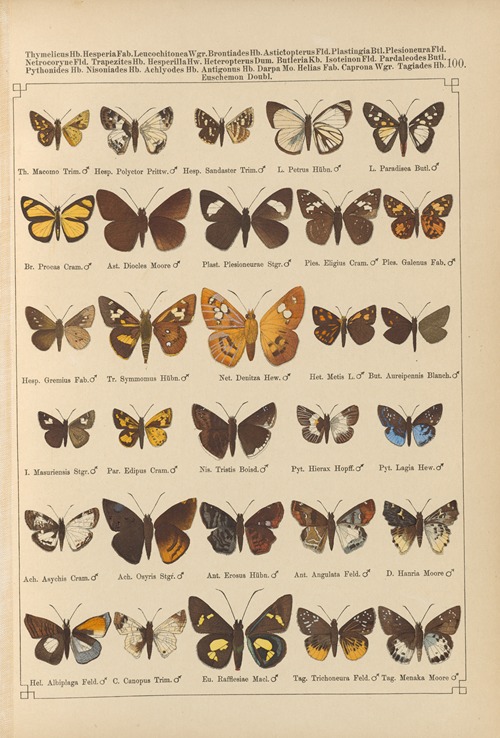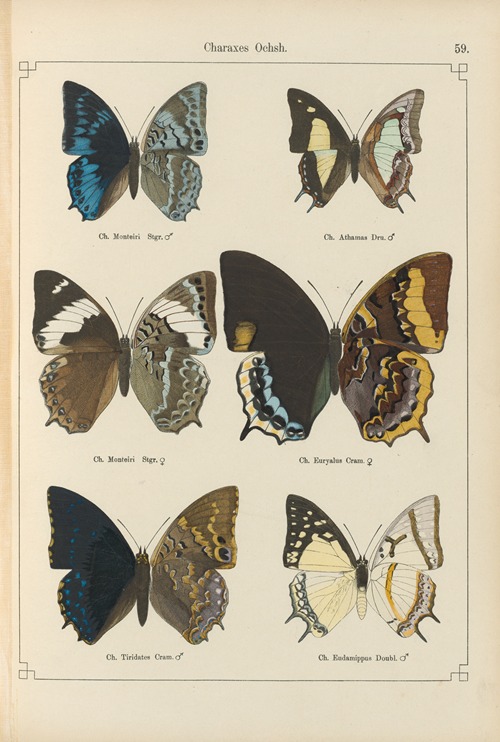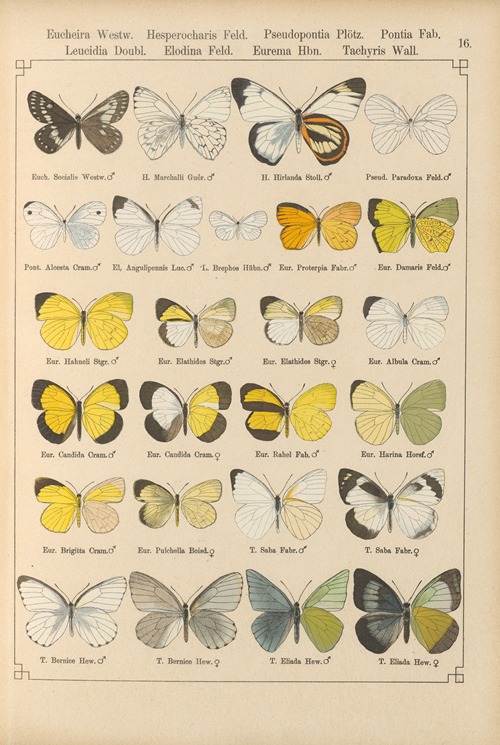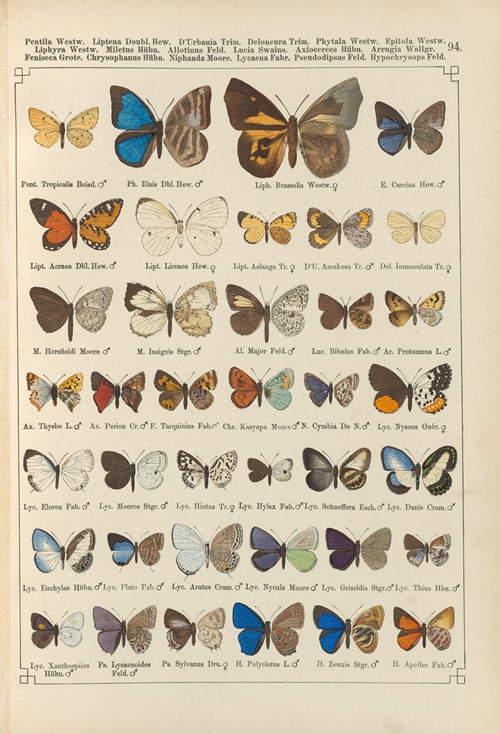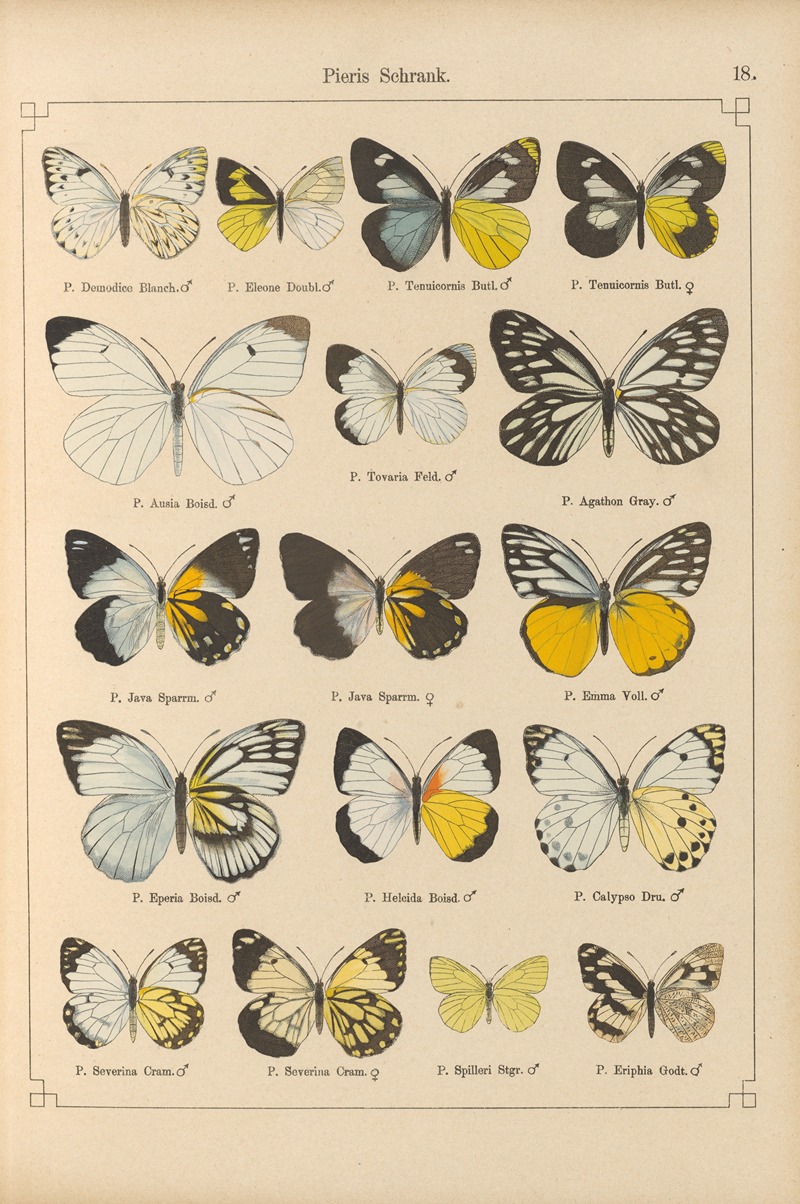
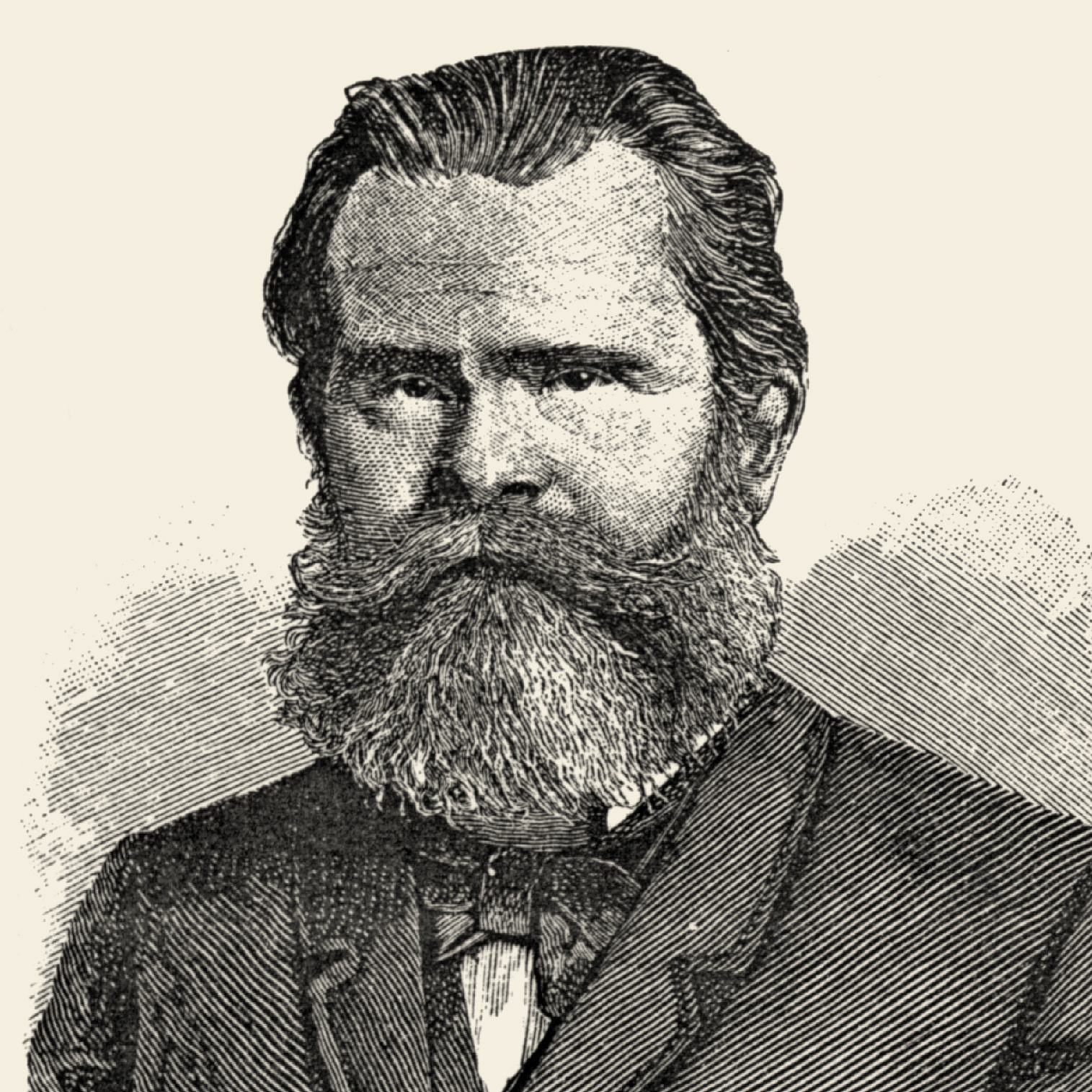
Otto Staudinger was a German entomologist and a natural history dealer considered one of the largest in the world specialising in the collection and sale of insects to museums, scientific institutions, and individuals.
Staudinger was born in Groß Wüstenfelde, Mecklenburg-Schwerin, from a Bavarian family on his father's side. His grandfather was born near Ansbach and came to Holstein at the end of the 18th century where Staudinger's father was born in Groß Flottbeck in 1799. His mother, a born Schroeder, was from Mecklenburg, born in Putzar at the Count of Schwerin's estate in 1794. At the time of Otto Staudinger's birth in 1830 his father was the tenant of the Rittergut Groß Wüstenfelde. At the age of six or seven Otto was introduced into entomology by his private tutor Wagner who collected beetles. In the summer of 1843 his father purchased the Rittergut Lübsee near Güstrow where Otto – now under the instruction of tutor Hermann – began to collect Lepidoptera. From October 1845 he attended the Gymnasium (grammar school) in Parchim and in summer 1849 received his Abitur (diploma qualifying for university admission).
In October 1849 Staudinger took up the study of medicine at the University of Berlin. In his second semester he changed to natural history under the impression of Dr. Stein's inspiring zoology lectures. From June 1850 to autumn 1851 he undertook entomological excursions and on the very first of these the capture of a series of freshly emerged Synanthedon tipuliformis in the cemetery of Stralau established his predilection for the clearwing moths (Sesiidae). He became friends with fellow students Theodor Johannes Krüper (later director of the natural history museum in Athens) and Carl Eduard Adolph Gerstaecker (later professor in Greifswald) and met many of the Berlin entomologists of the era, especially Grabow, Simon, Scherffling, Libbach, Glasbrenner, Mützel, Streckfuß, Walther, the Kricheldorff brothers, Ribbe and Kalisch. Their collecting grounds were mainly the Grunewald, the Jungfernheide (where at that time Staurophora celsia still occurred), the Wuhlheide, the Kalkberge near Straußberg and the lonely Finkenkrug, then situated deep inside the forest.
In autumn 1851 Staudinger seems to have fallen ill (though the biographical sources are silent about the nature of his ailment) and after a prolonged illness he was advised to go on a recovery trip. Accordingly, Staudinger spent May to August 1852 at Lake Geneva and in the Mont Blanc area, then he travelled across the Simplon Pass to Genoa and thence – always on foot – along the Riviera to Nice, Marseilles, and Montpellier where he stayed until late November, everywhere socialising with local entomologists. After a visit at home he travelled to Paris in January 1853 to perfect his French and to learn Italian and English. At Easter 1853 he took up his studies in Berlin again and collected intensively – mainly Sesiidae – together with Kalisch, Ribbe and the Kricheldorff brothers. In March 1854 he received his Dr. phil. degree for the thesis "De Sesiis agro Berolinensis".
From April to October 1854 Staudinger collected in Sardinia with the intention to discover the larvae of Papilio hospiton in which he succeeded after many failures. In 1855 he collected in the Alps (Carinthia, Glockner area). In April 1856 he started on a voyage to Iceland together with C. Kalisch. On his return in the autumn of 1856 he became engaged to entomologist Grabow's daughter and married her on 21 January 1857. The same night the couple departed and travelled via Paris, Lyon, Marseilles – where they stopped and learned Spanish within ten days – Barcelona, Valencia and Almería to Málaga, where they stayed for a month. Then they spent nine months in Granada (living in the Alhambra) where Staudinger collected extensively and where their daughter was born on 2 November. In December they went via Málaga to Chiclana near Cadiz, spent the first half of 1858 there and finally returned to Berlin in July. Because of the costs of his travels Staudinger founded a business and, with the help of his father-in-law, began to sell parts of his collections. Over the years this grew into a substantial and successful naturalist business with worldwide connections. In 1859 the Staudinger family moved to Dresden where his son Paul was born the same year. In Dresden Staudinger built the Diana-Bad (Diana Baths) in 1864, a large facility with bath tubs, steam baths, and Irish-Roman baths which Staudinger loved since this type of bath had helped him when he had a bad cold on a journey. When his city dwelling became too small in 1874 he moved to the "Villa Diana" in Blasewitz near Dresden. In 1879 the Danish-born entomologist Andreas Bang-Haas (1846–1925) entered into the business, married Staudinger's daughter in 1880 and became co-owner of the firm, now "Staudinger & Bang-Haas", in 1884 or 1887. In 1884 the growing company moved to the larger "Villa Sphinx" and ten years later a two-story wing had to be added. From the mid-1880s onward Staudinger entrusted the company business more and more to Bang-Haas and concentrated on his work in Lepidoptera taxonomy. Staudinger died on 13 October 1900 during a recovery trip in Lucerne, Switzerland.
